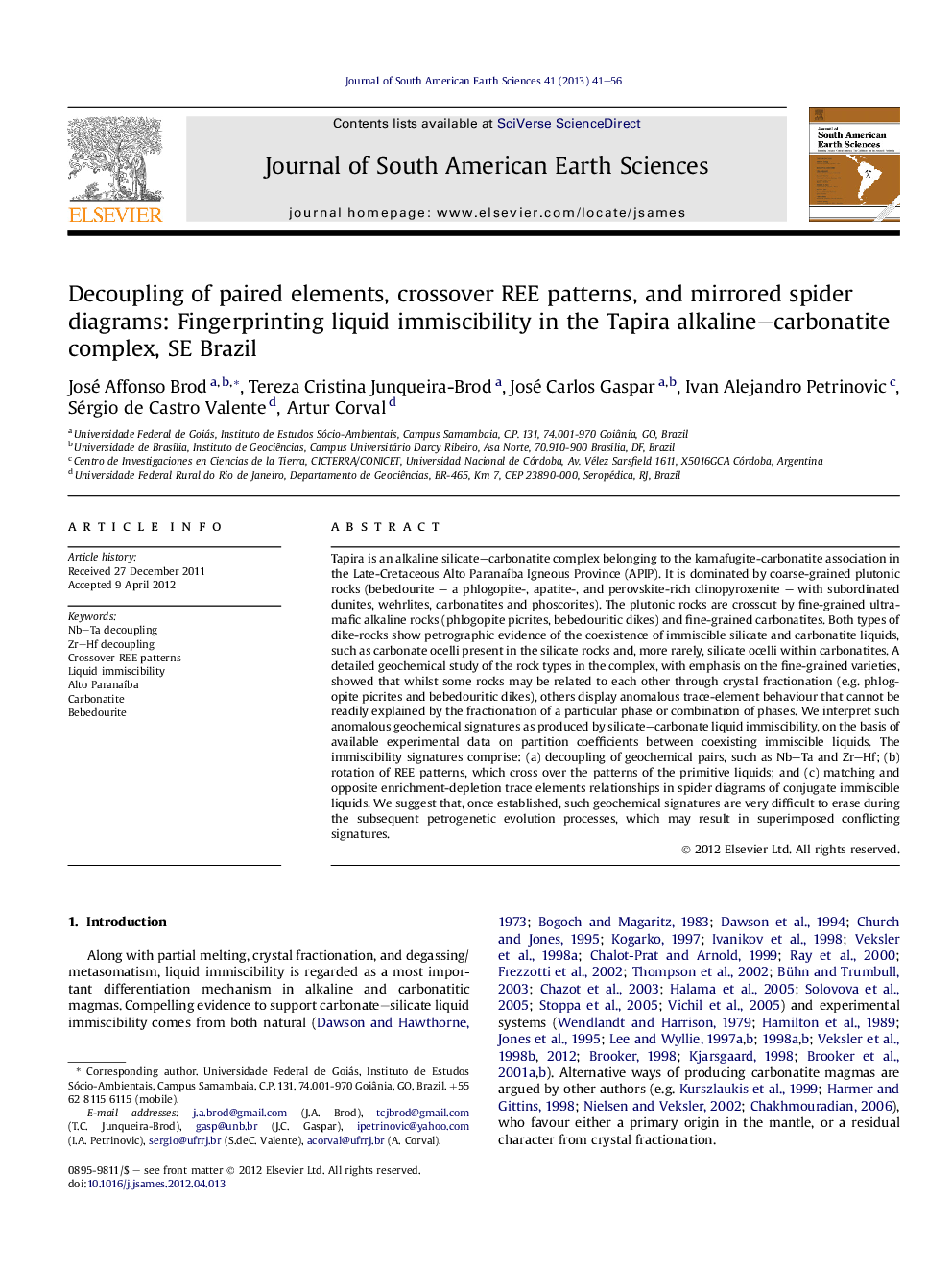| کد مقاله | کد نشریه | سال انتشار | مقاله انگلیسی | نسخه تمام متن |
|---|---|---|---|---|
| 4682457 | 1635168 | 2013 | 16 صفحه PDF | دانلود رایگان |

Tapira is an alkaline silicate–carbonatite complex belonging to the kamafugite-carbonatite association in the Late-Cretaceous Alto Paranaíba Igneous Province (APIP). It is dominated by coarse-grained plutonic rocks (bebedourite – a phlogopite-, apatite-, and perovskite-rich clinopyroxenite – with subordinated dunites, wehrlites, carbonatites and phoscorites). The plutonic rocks are crosscut by fine-grained ultramafic alkaline rocks (phlogopite picrites, bebedouritic dikes) and fine-grained carbonatites. Both types of dike-rocks show petrographic evidence of the coexistence of immiscible silicate and carbonatite liquids, such as carbonate ocelli present in the silicate rocks and, more rarely, silicate ocelli within carbonatites. A detailed geochemical study of the rock types in the complex, with emphasis on the fine-grained varieties, showed that whilst some rocks may be related to each other through crystal fractionation (e.g. phlogopite picrites and bebedouritic dikes), others display anomalous trace-element behaviour that cannot be readily explained by the fractionation of a particular phase or combination of phases. We interpret such anomalous geochemical signatures as produced by silicate–carbonate liquid immiscibility, on the basis of available experimental data on partition coefficients between coexisting immiscible liquids. The immiscibility signatures comprise: (a) decoupling of geochemical pairs, such as Nb–Ta and Zr–Hf; (b) rotation of REE patterns, which cross over the patterns of the primitive liquids; and (c) matching and opposite enrichment-depletion trace elements relationships in spider diagrams of conjugate immiscible liquids. We suggest that, once established, such geochemical signatures are very difficult to erase during the subsequent petrogenetic evolution processes, which may result in superimposed conflicting signatures.
► Carbonate–Silicate liquid immiscibility produces decoupling of geochemical pairs.
► Nb/Ta increases and Zr/Hf decreases in the carbonatite conjugate.
► Immiscibility produces mirrored enrichment/depletion features in spider diagram.
► Immiscibility produces REE crossover patterns.
► Once established, this signatures are difficult to erase in subsequent evolution.
Journal: Journal of South American Earth Sciences - Volume 41, January 2013, Pages 41–56